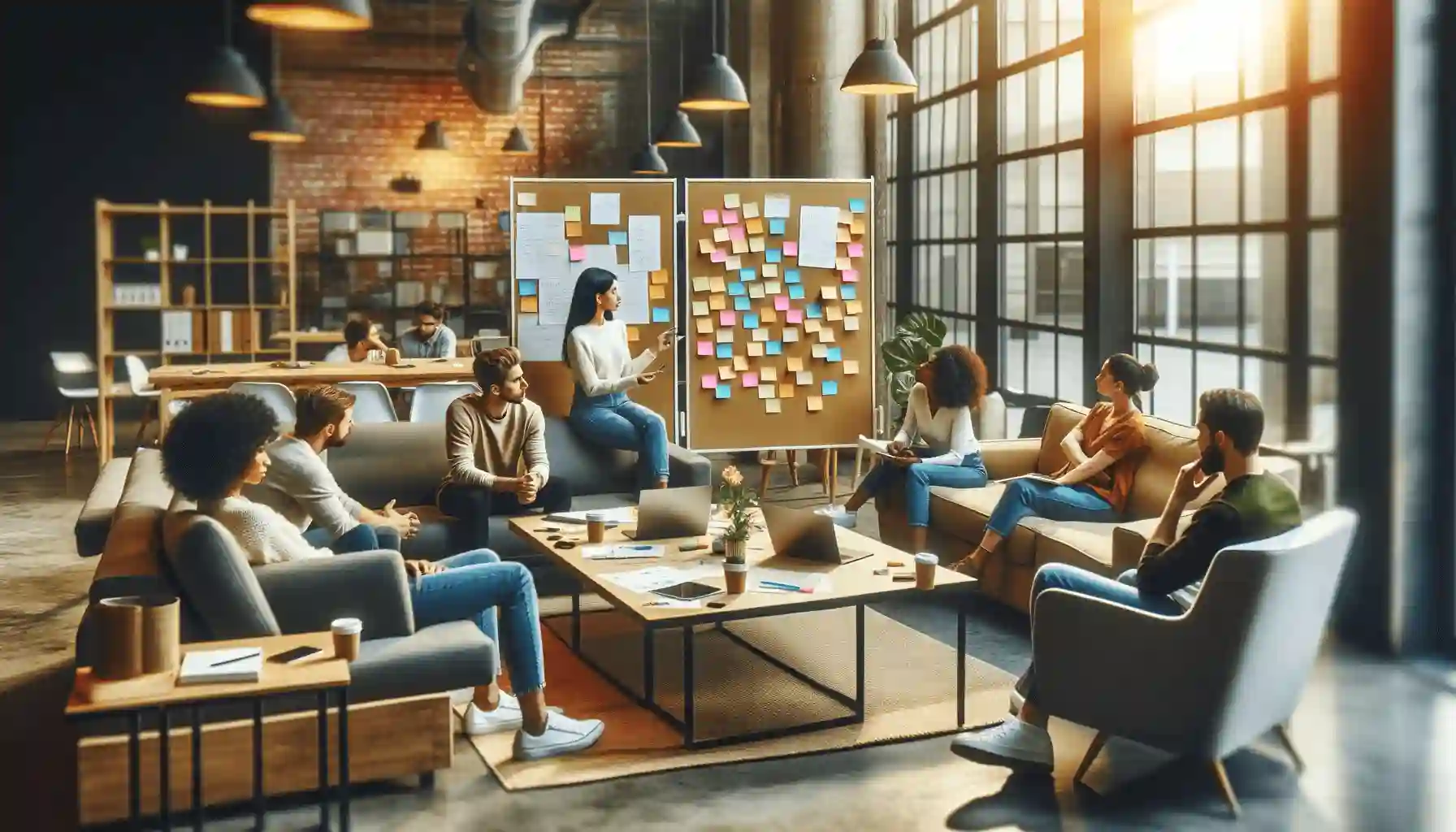Customer Success Meeting
This guide will walk you through the essential elements of use customer success meeting to keep your attendees aligned and engaged.
Try Lark for Free
The customer success meeting serves as a pivotal interaction that allows organizations to align with their clients, address concerns, and collaboratively pave the way for mutual success. In this article, we will delve into the critical components of a successful customer success meeting, exploring the significance of each element and offering insights on optimizing these meetings for the year 2024.
Use Lark Meetings to turn meetings into true collaborative experiences.
What is a customer success meeting?
A customer success meeting is a strategic engagement where organizations interact with their clients to ensure the effective utilization of products or services and address any challenges or opportunities. These meetings are geared towards understanding the client's needs, enhancing the value offered by the organization, and nurturing a long-term, mutually beneficial partnership. By proactively engaging with clients through these meetings, businesses can create an environment that fosters loyalty and advocacy.
Goals of customer success meeting
The primary objectives of a customer success meeting revolve around fostering strong client relationships, addressing any potential issues, and identifying opportunities for collaboration and growth. By setting clear goals for each meeting, organizations can ensure that the interaction is purposeful, productive, and aligns with the overarching business objectives. Key goals include:
- Establishing a platform for open communication and feedback
- Strengthening client understanding of product/service offerings
- Identifying opportunities for upselling or cross-selling products and services
- Addressing any challenges or concerns proactively
Key participants in customer success meeting
Effective participation in these meetings is vital for their success. The key participants typically include the client's key stakeholders, the customer success manager, relevant product/service experts, and anyone else essential to addressing the client's needs. Their roles can vary from providing technical expertise to understanding the client's business objectives, ensuring a comprehensive and collaborative approach.
Related:
Unlock the Power of Webinars: A Comprehensive Guide to Boost Your Business | Lark Blog | Lark BlogLearn more about Lark x Meetings
Crafting topics, agenda, and structure
Determining the relevant topics, structuring an effective agenda, and maintaining an overall productive meeting structure are essential components of a successful customer success meeting. The topics and agenda should be tailored to address the client's needs, aspirations, and challenges, ensuring that the discussion is aligned with the client's strategic objectives and the organization's offerings. Structuring the meeting effectively involves assigning time for each topic, allowing for open discussion, and maintaining flexibility to address unforeseen issues or client queries.
Learn more about Lark x Meetings
Frequency of customer success meetings
Determining the optimal frequency for these meetings is crucial for maintaining continuous engagement with the client without overwhelming them. Factors like the complexity of the product/service, the nature of the client's business, and the ongoing relationship dynamics must be considered. Striking the right balance ensures that the meetings occur at a frequency that allows for consistent nurturing of the client relationship without becoming an excessive burden.
Differentiating customer success meeting from similar meetings
Customer success meetings are distinct from regular client interactions or progress updates due to their focused approach to understanding client needs and delivering value. These meetings address strategic, long-term objectives and evolve around identifying opportunities for mutual growth and partnership. The key difference lies in the proactive collaboration and the specific agenda geared towards understanding, supporting, and aligning with the client's business aspirations.
Learn more about Lark x Meetings
Three practical examples of customer success meetings
Scenario 1: quarterly performance review
Scenario 1: quarterly performance review
In this scenario, a SaaS company conducts quarterly performance reviews with its clients to assess utilization, gather feedback, and align future product developments with client needs.
Scenario 2: onboarding and training for e-commerce platform
Scenario 2: onboarding and training for e-commerce platform
An e-commerce platform hosts onboarding and training sessions for its clients, offering guidance, best practices, and tools to help clients maximize their platform's potential.
Scenario 3: proactive issue resolution in financial services
Scenario 3: proactive issue resolution in financial services
A financial services company proactively engages with clients to identify potential issues, address concerns, and offer tailored solutions to ensure client satisfaction and trust.
Common pitfalls to avoid
Recognizing potential pitfalls is critical to ensure the success of customer success meetings. Some common pitfalls and strategies to address them include:
- Overlooking Client Engagement: Actively engage clients throughout the meeting to avoid disinterest and disengagement.
- Ignoring Client Feedback: Address client feedback and concerns promptly to demonstrate the value placed on their input.
- Neglecting Follow-ups: Ensure timely follow-ups to uphold the commitments made during the meeting and drive continued progress.
Related:
Unlock the Power of Webinars: A Comprehensive Guide to Boost Your Business | Lark Blog | Lark BlogLearn more about Lark x Meetings
Dos and don'ts
| Dos | Don'ts |
|---|---|
| Prepare and personalize in advance | Overwhelming clients with unnecessary data |
| Encourage active participation | Neglecting to follow up on action points |
| Align meeting content with client needs | Underestimating the importance of client feedback |
| Follow-up post-meeting for continuity | Allowing the meeting to become overly formal |
Ensuring success in virtual customer success meetings
Virtual customer success meetings necessitate additional considerations to drive engagement and productivity. Leveraging interactive tools, maintaining a professional yet casual virtual environment, and managing time effectively are crucial for seamless virtual interactions. By integrating these elements, organizations can ensure that the online format does not hinder the productivity or impact of the meeting.
Related:
Unlock the Power of Webinars: A Comprehensive Guide to Boost Your Business | Lark Blog | Lark BlogLearn more about Lark x Meetings
Typical takeaways
Successful customer success meetings yield practical outcomes that contribute to the growth and satisfaction of both the client and the organization. Takeaways typically include actionable insights, refined strategies, identified opportunities for alignment, and a clear understanding of the client's future needs and aspirations. These key takeaways guide the next steps and shape the ongoing client relationship.
Questions to ask
Engaging clients with pertinent questions is an effective way to gain valuable insights and demonstrate a commitment to understanding their unique needs. Some questions to consider include:
- What are your top priorities for the upcoming quarter/year?
- How can we better support your team's objectives?
- Are there any challenges or concerns we can help address?
- What improvements or new features would you like to see in our product/service?
- How can we enhance our collaboration to deliver greater value to your organization?
Learn more about Lark x Meetings
Conclusion
In conclusion, the customer success meeting underscores the fundamental significance of proactive client engagement and relationship nurturing for organizational success. By acknowledging the goals, participants, structure, and potential pitfalls, and leveraging practical examples and strategies, organizations can harness the power of these meetings to foster enduring client partnerships and drive mutual growth.
Use Lark Meetings to turn meetings into true collaborative experiences.
A Game Changer for Customer Success Meeting: Empower your team with Lark Meetings
In the fast-paced and dynamic world of modern business, effective communication and collaboration are crucial for success of Customer Success Meeting. Here we introduce Lark Meetings to serve as a centralized hub for all communication needs.
Transform your meetings into collaborative endeavors
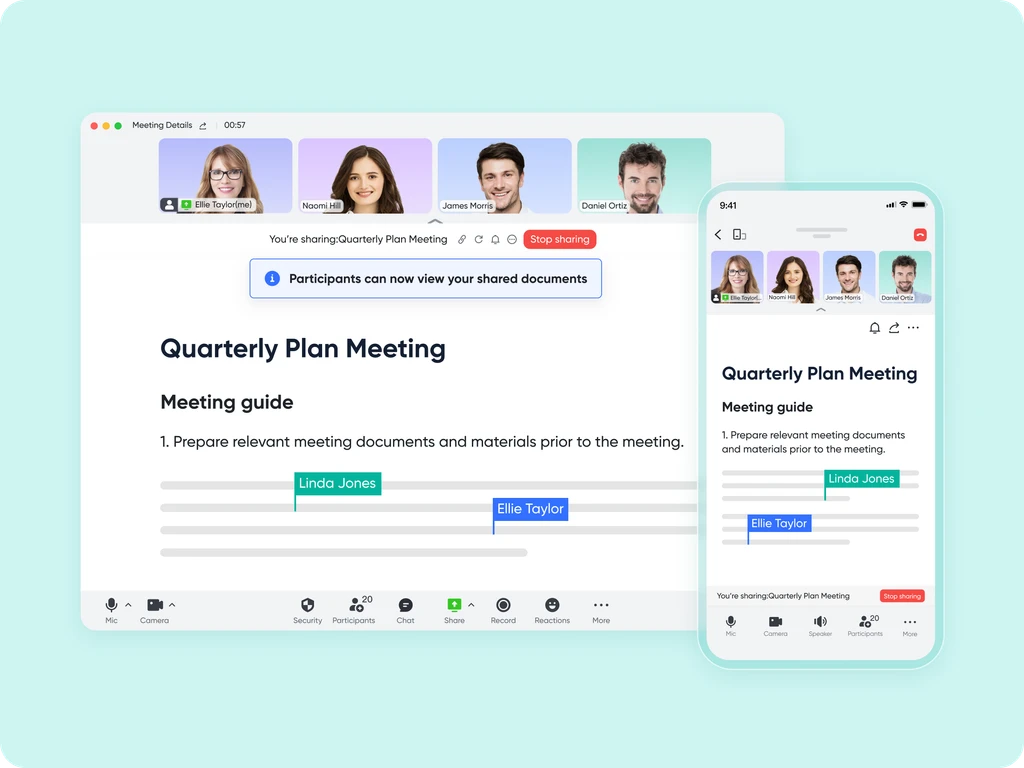
Leverage the potency of in-call document sharing, intelligent meeting minutes, and mobile-optimized features to enhance productivity collaboratively, irrespective of your location or schedule.
Seamlessly collaborate in real-time, across any device
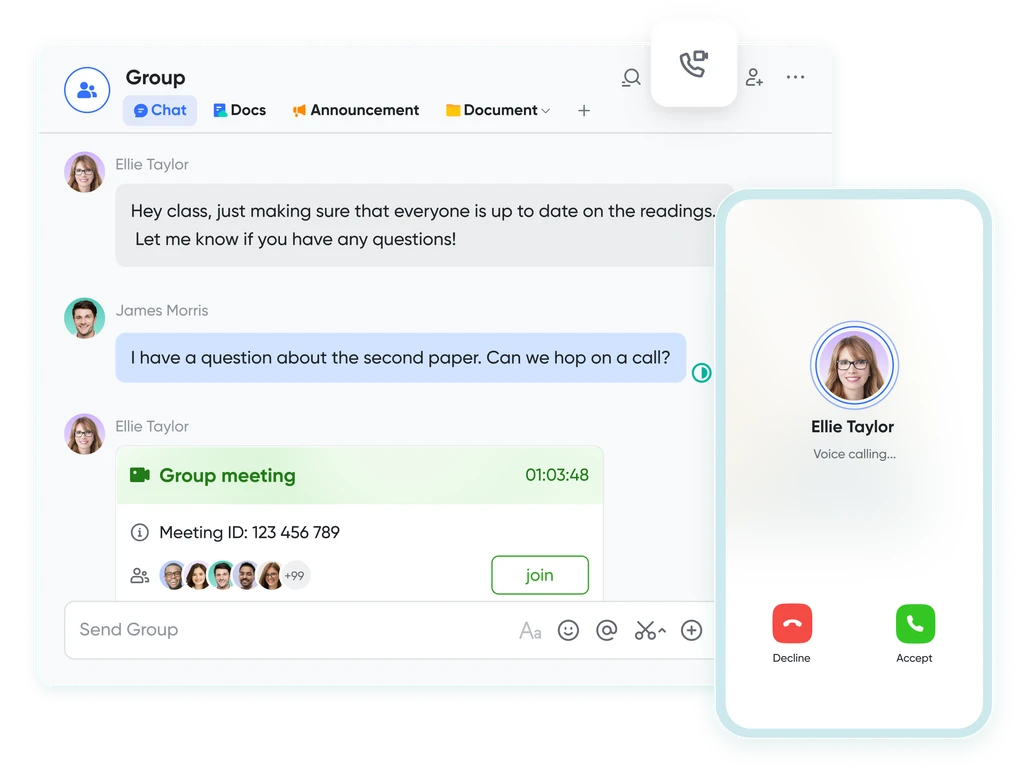
Share live documents instead of just screen views. Participants can navigate and edit simultaneously within the video call window, even while on the move.
Shift your focus to engagement, not note-taking
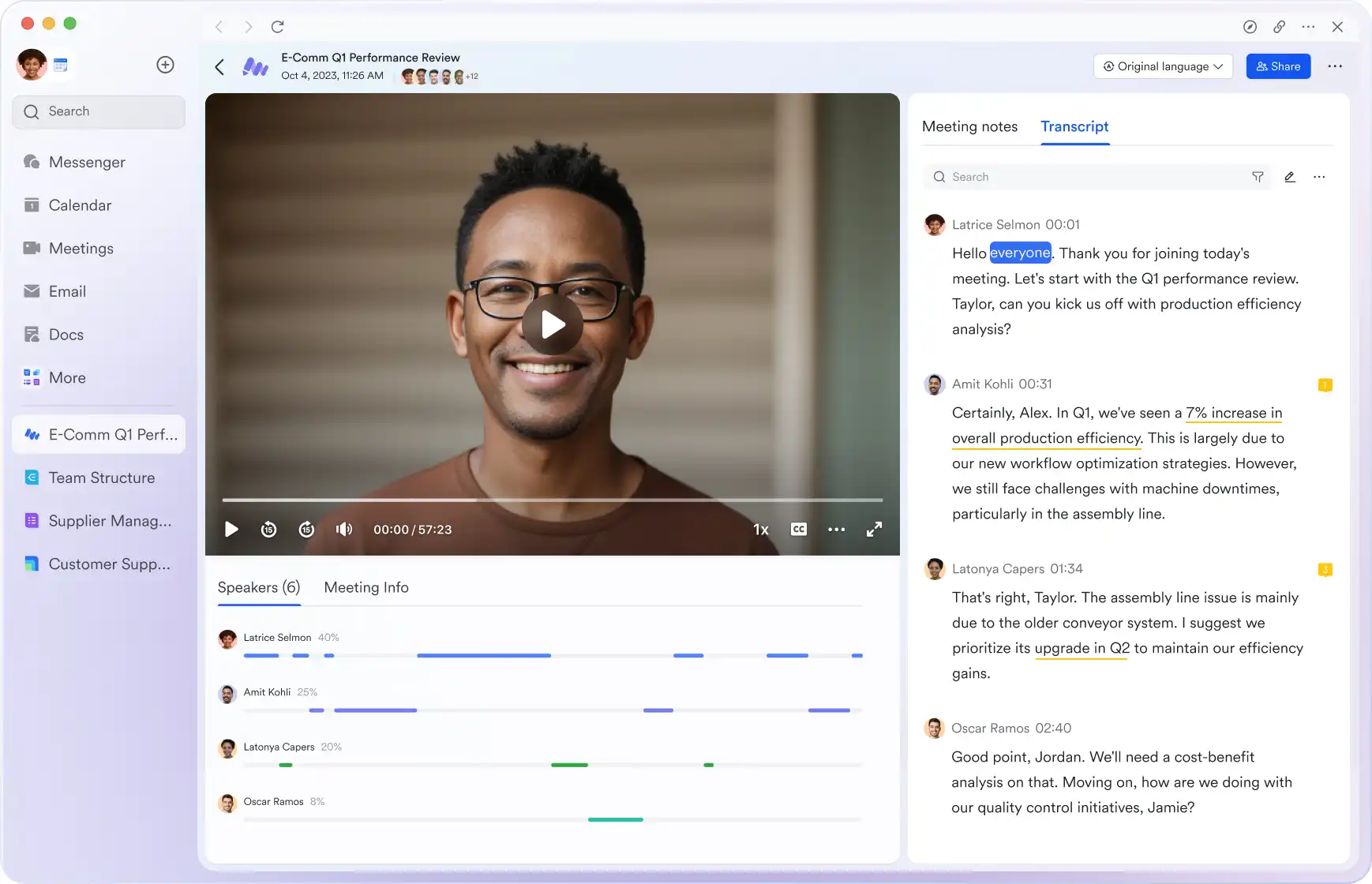
Lark Minutes automatically converts video meetings into transcripts, facilitating easy viewing, searching, and collaborative editing. Stay in the loop asynchronously, even if you can't attend the live meeting. Lark Minutes for meeting minutes support translation into 10+ different languages.
Break language barriers in communication
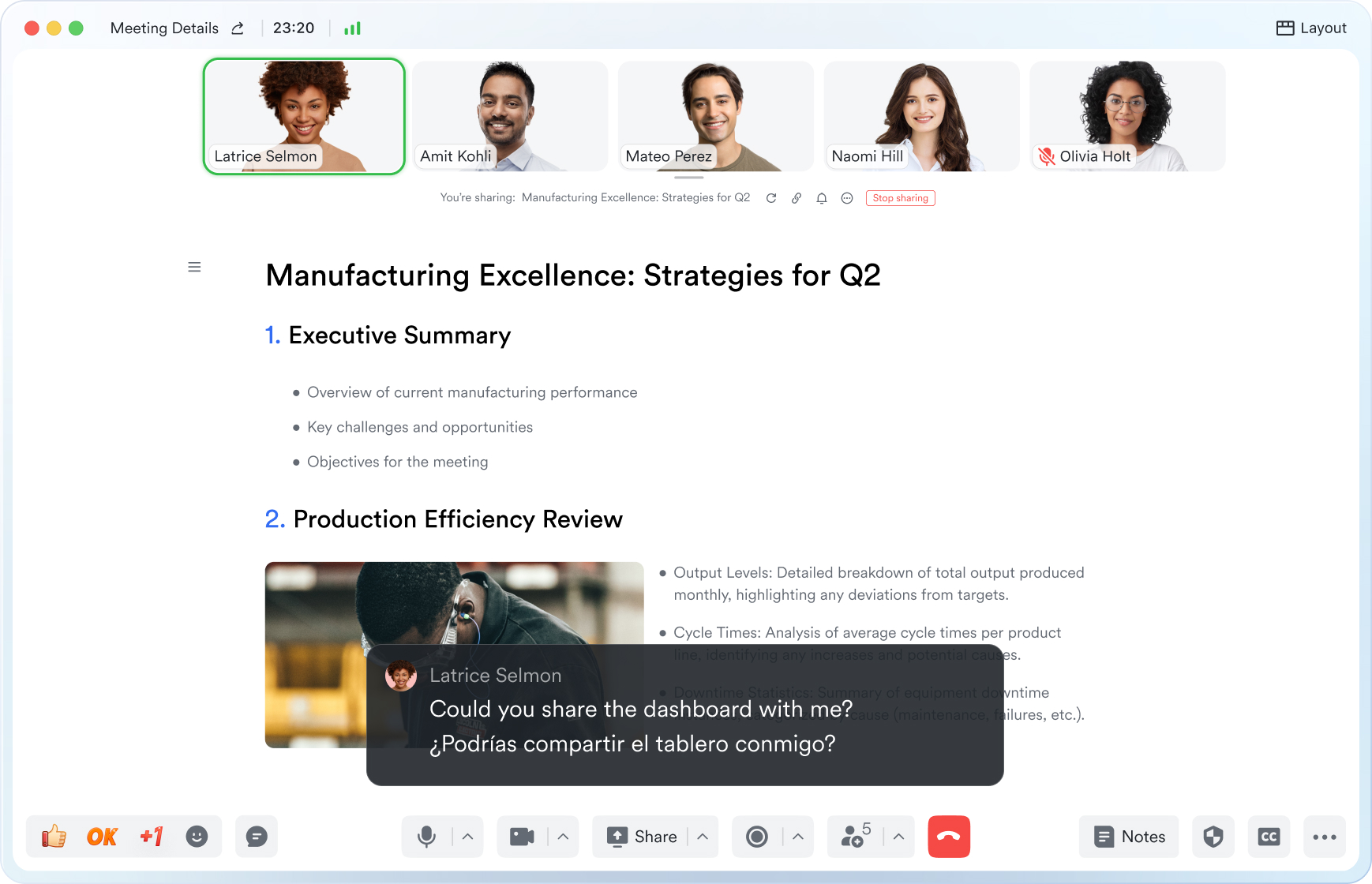
Lark Meetings provide real-time translation for subtitles, allowing individuals from diverse backgrounds to express themselves in their native languages. Ensure every voice is heard, regardless of geographical location. Live subtitles currently support translations from English, Chinese, and Japanese to 10+ different languages. See more translation feature in Lark.
Connect with larger audiences
Host dynamic online meetings and events accommodating up to 1,000 participants, with the flexibility of up to 50 breakout sessions for intimate group discussions within the larger meeting context. Try more Lark features for free.





